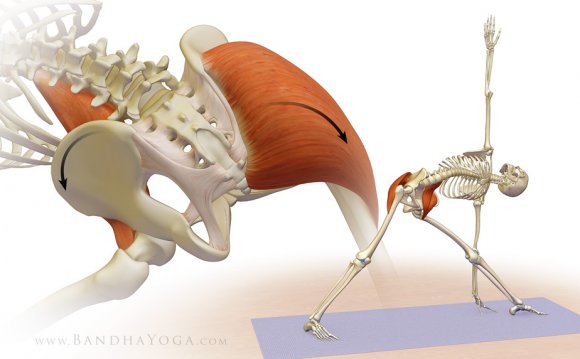
I was asking her to move her leg, ever so slightly, to affect a change in sensation. She tried unsuccessfully to move her leg by concentrating on the hamstrings and quadriceps. Since these were the largest, most obvious muscles in the area we were exploring it made sense to her to use those muscles to help her move her leg.
She didn’t feel anything or notice any changes.
When I asked her to move her hip, change the position of her knee, and focus on her foot, the sensations changed.
Her aha moment came after realizing that for most of her life she compartmentalized rather then understanding and accepting her integrated body.
An integrated body
Many people fail to comprehend the physiological integration of the body. Forget about the woo-woo we- all-are-one soul talk. On the most scientific level of matter and bones, we are ALL CONNECTED!
Muscles, bones, tendons, ligaments, and fascia are all types of connective tissue. The “ingredients” that create these structures may be slightly different allowing for various functions, but these tissues are basically “cut from the same cloth.”
A muscle doesn’t just end, it turns into a tendon which turns into a bone which turns into a ligament and the sequence starts all over again. All of these tissues are encased in fascia. Physiologically it is impossible to isolate one particular area of the body without recruiting other areas of the body as well because everything is connected.
Your hip might hinder your breathing
If you have a tight psoas (hip flexor) you might also have a hard time breathing. It doesn’t seem like flexing your hips would have anything to do with breathing. Turns out the psoas connects into the diaphragm; if the psoas is tight it could be pulling down on the diaphragm, which may prevent you from taking deep breaths. The vagus nerve innervates the diaphragm, which means if you can’t take deep breaths you may find it hard to relax. Without deep breaths, the vagus nerve is unable to send signals to the parasympathetic nervous system that alerts the rest of your body it’s okay to relax. All systems of the body are interdependent!
From here, we can start to make the leap to an interconnected body, mind, and spirit, although it becomes much more esoteric and harder to explain in words.
Experience interconnectedness in your Self
The lowest hanging fruit on the tree, then, is to understand, not just intellectually, but experientially, the complete interconnectedness of your physical body. Once you can put this interdependent relationship to work in movement (asana), life starts to become smoother on a physical level. You may experience less pain, more ease in walking, sitting, playing with your kids, or doing daily chores around the house. This will lead to a better mood and more energy.
Until this clicks on a physical level, it will still feel like you’re throwing your body around on the mat in a yoga class. Utilizing the whole body, all its layers, in every posture, will help you achieve your perfect alignment and get you ready for a more internal, energetic, and subtle experience of your Self. This is the spirit and vitality that makes you you and is the next step beyond the asana, the mat, the studio, and even the teacher.
You don’t have to believe in airy-fairy New Age spirit visualizations to still benefit from the interconnectedness of your physical body. Yoga practice can help you get there if you pay close attention.









